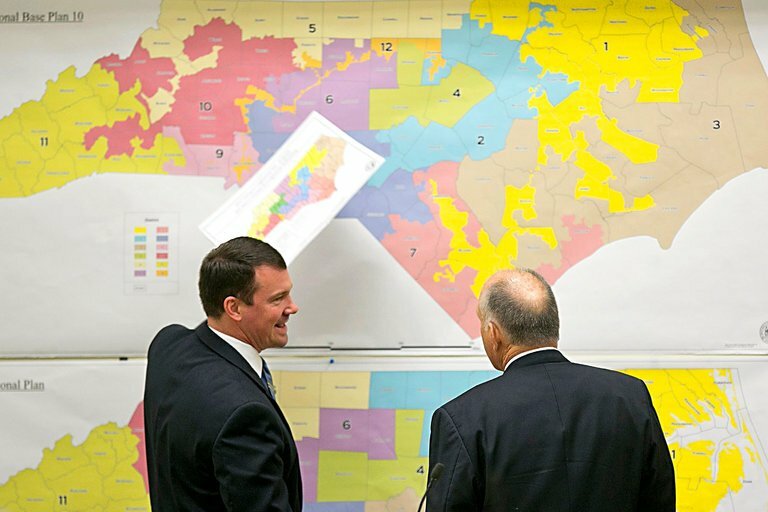The fall season in North Carolina brings with it the promise of not just colorful leaves on trees but a pivotal shift in redistricting.
The Tar Heel state is no stranger to the redistricting process, as it’s been decades since North Carolina has produced a set of maps that survived for an entire decade.
The state Legislature defines redistricting as follows:
Redistricting is the process of defining the districts from which public officials are elected. Members of the United States House of Representatives, the North Carolina Senate and the North Carolina House of Representatives are elected by district.
In this piece, I will briefly overview where we are currently in the redistricting process and what you need to know going into 2024.
These proposed maps are expected to be finalized tomorrow. Once lawmakers approve them, they will become law. Unlike many other acts of the legislature. Roy Cooper has no veto power over redistricting, which means he cannot overturn them. However, that does not mean there won’t be legal scrutiny and lawsuits. Redistricting and elections-related lawsuits seem to be as certain as the rising sun here in North Carolina.
As we look at these proposed new maps, knowing how they will affect the state’s political landscape going into another election year is important.
Last week, Locke released their 2024 Civitas Partisan Index (CPI) for the proposed House and Senate maps.
The CPI, taking inspiration from the Cook Political Report’s Partisan Voting Index, provides a nuanced measure of the partisan leaning of each state legislative district.
Along with the release of the CPI, Dr. Andy Jackson, Director of Locke’s Civitas Center for Public Integrity, broke down each map and highlighted its role in helping to gain insights into the 2024 election.
In the state Senate map, the CPI shows 16 solid Democratic, 1 likely Democratic, five toss-up, 5 lean Republican, four likely Republican, and 19 solid Republican seats. Republicans start with 23 likely/safe seats, needing two more for a majority, and seven out of the 10 lean Republican/toss-up seats for a supermajority.
Shifting to the House, In the 120-seat North Carolina House, a supermajority requires 72 seats. The CPI shows a breakdown of 36 safe Democratic, six likely Democratic, six lean Democratic, three toss-ups, 17 lean Republican, 13 likely Republican, and 39 safe Republican seats.
Dr. Andy Jackson notes that the purpose of the CPI isn’t to predict races but instead focuses on an important insight:
“The CPI measures the general tendency of voters in a district to vote for one party or the other. Doing so creates a baseline measure that journalists, researchers, and others can use when examining North Carolina legislative races. Using the CPI can gain you essential insights into the 2024 election.”
The proposed Congressional map favors Republicans in ten districts and secures three for Democrats while rendering Rep Don Davis’ 1st District extremely competitive with a D+0 rating. As this area swiftly shifts toward Republicans, Davis may find it challenging to retain his seat.
Just as is customary with every redistricting process, a wave of lawsuits is anticipated. We will keep you up to date on all things redistricting, including the legal battles that will ramp up in the coming weeks. For that and more, regularly visit our site for new developments and updates!
To see the full details and results of the CPI, click here.


